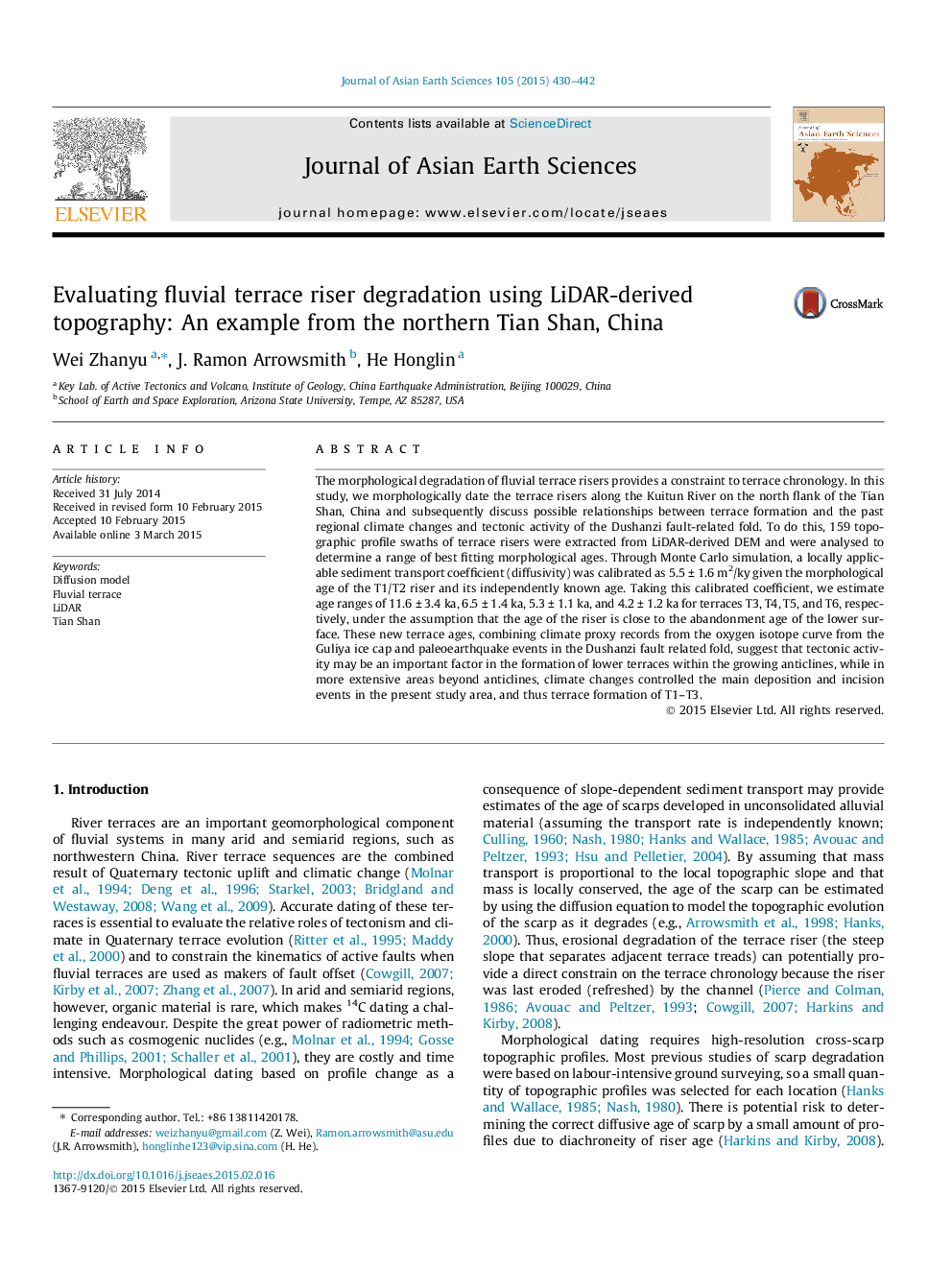| کد مقاله | کد نشریه | سال انتشار | مقاله انگلیسی | نسخه تمام متن |
|---|---|---|---|---|
| 4730509 | 1640364 | 2015 | 13 صفحه PDF | دانلود رایگان |

• Calibrate local diffusive transport coefficient by terrace of known abandonment age.
• Apply calibrated coefficient to determine the abandonment ages of other terraces.
• Evaluate the roles of tectonism and climate change in terrace formations.
The morphological degradation of fluvial terrace risers provides a constraint to terrace chronology. In this study, we morphologically date the terrace risers along the Kuitun River on the north flank of the Tian Shan, China and subsequently discuss possible relationships between terrace formation and the past regional climate changes and tectonic activity of the Dushanzi fault-related fold. To do this, 159 topographic profile swaths of terrace risers were extracted from LiDAR-derived DEM and were analysed to determine a range of best fitting morphological ages. Through Monte Carlo simulation, a locally applicable sediment transport coefficient (diffusivity) was calibrated as 5.5 ± 1.6 m2/ky given the morphological age of the T1/T2 riser and its independently known age. Taking this calibrated coefficient, we estimate age ranges of 11.6 ± 3.4 ka, 6.5 ± 1.4 ka, 5.3 ± 1.1 ka, and 4.2 ± 1.2 ka for terraces T3, T4, T5, and T6, respectively, under the assumption that the age of the riser is close to the abandonment age of the lower surface. These new terrace ages, combining climate proxy records from the oxygen isotope curve from the Guliya ice cap and paleoearthquake events in the Dushanzi fault related fold, suggest that tectonic activity may be an important factor in the formation of lower terraces within the growing anticlines, while in more extensive areas beyond anticlines, climate changes controlled the main deposition and incision events in the present study area, and thus terrace formation of T1–T3.
Journal: Journal of Asian Earth Sciences - Volume 105, 1 June 2015, Pages 430–442